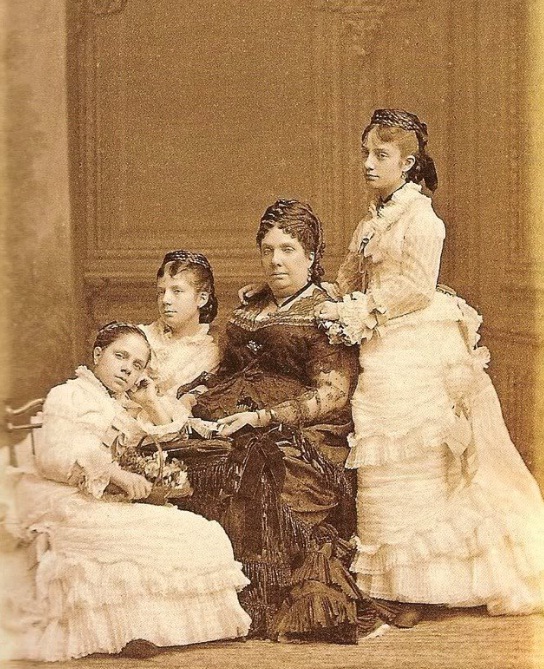by Susan Flantzer © Unofficial Royalty 2014
2023
Infanta Leonor, Princess of Asturias and heir presumptive to the Spanish throne was born on October 31, 2005, at the Ruber International Clinic in Madrid, Spain. She is the elder of two daughters of King Felipe VI of Spain and his wife Queen Letizia (born Letizia Ortiz Rocasolano).
Currently, Spain’s succession law is male-preference cognatic primogeniture. This means that Leonor, as the elder of King Felipe’s two daughters, is first in line to inherit the throne, and she is the heir presumptive. However, if her parents have a son, which seems unlikely at this point, he would be the heir apparent and Leonor would forfeit the title of Princess of Asturias and the other titles to her brother. There have been discussions of changing the succession law to absolute primogeniture, where the eldest child, regardless of gender, inherits the throne, but no legislation has been forthcoming. If Leonor ascends to the throne, she will be Spain’s first queen regnant since Isabella II, who reigned from 1833 to 1868.
Infanta Leonor was christened at Zarzuela Palace in Madrid, Spain on January 14, 2006, with water from the Jordan River, a royal custom. She was also given the additional names of de Todos los Santos (of All the Saints), a Bourbon tradition. Her godparents were:
- King Juan Carlos I of Spain, her paternal grandfather
- Queen Sofía of Spain, her paternal grandmother
Leonor has one sister:
- Infanta Sofía of Spain (born 2007)

Leonor in her military uniform when she entered the General Military Academy; Credit – https://www.casareal.es/
From 2008 – 2021, Leonor attended Santa María de los Rosales School (link in Spanish) in Madrid, Spain, where her father attended until he was 16. Starting in the fall of 2021, Leonor began attending the United World College of the Atlantic in Wales, graduating in May 2023. On August 17, 2023, Leonor began a three-year military training education program at the General Military Academy in Zaragoza, Spain. Leonor is fluent in both Spanish and English, which she learned from her British nanny and also from her grandmother Queen Sofía, and has studied Mandarin.

Leonor, 2nd from the right, attends her father’s proclamation ceremony; Credit – ceruleanchronicle.com
On June 2, 2014, King Juan Carlos, Infanta Leonor’s grandfather, announced his intention to abdicate the throne in favor of his son. On June 18, 2014, King Juan Carlos signed the formal instrument of abdication and Felipe ascended the throne at midnight. At the same time, Leonor automatically became Princess of Asturias, a title given to the heir to the Spanish throne. King Felipe VI was sworn in and proclaimed as king on June 19, 2014, in a ceremony in the Congress of Deputies, the lower house of the Spanish legislature.
Besides holding the Princess of Asturias title, Leonor is also The Princess of Girona (Aragon), The Princess of Viana (Navarre) and holds the historical titles of Duchess of Montblanc, Countess of Cervera and Lady of Balaguer. When she turned eighteen, Leonor was formally invested as the Princess of Asturias and swore loyalty to the King, before the Spanish Parliament, taking an oath to discharge her duties faithfully, to abide by the Constitution and the law, ensure that they are abided by, and to respect the rights of citizens and the Autonomous Communities, fully undertook her role as successor to the Crown.
On January 30, 2018, her father’s 50th birthday, Leonor was invested with the Order of the Golden Fleece. The Order is the highest award in Spain and is considered one of the most prestigious orders in Europe. The King had awarded her with the order by Royal Decree in October 2015.
On October 31, 2018, Leonor gave her first-ever public speech at the Instituto Cervantes in Madrid, where she read the first article of the Constitution of Spain. The speech coincided with the 40th anniversary of the Constitution of Spain and her 13th birthday.
This article is the intellectual property of Unofficial Royalty and is NOT TO BE COPIED, EDITED, OR POSTED IN ANY FORM ON ANOTHER WEBSITE under any circumstances. It is permissible to use a link that directs to Unofficial Royalty.

























